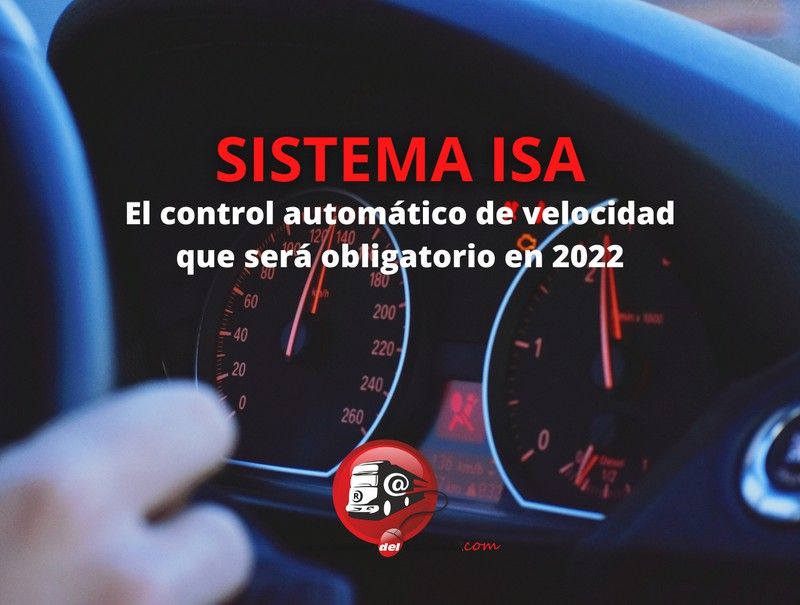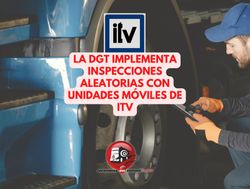ISA system, the automatic speed control that will be mandatory in 2022
The European Commission approved in 2018 a series of safety standards for vehicles manufactured and circulating in Europe. Among them, the obligation to include the ISA system in vehicles manufactured from 2022 was established. In this article we explain everything that is known about this new driving assistance and control system.

The ISA System, acronym for Intelligent Speed Assistance, or Intelligent Speed Assistant is a security system that must be included in vehicles from March 2022, in order to be homologated in the European Union.
This innovative system has a camera that allows the vehicle to recognize traffic signs and a database linked to GPS with the speed limits of streets and highways throughout Europe.
Through these devices, the ISA System will help to always keep the speed of the vehicle within the limits marked on each stretch of road or street in any city.
The system will know at all times what the applicable speed limit is and will warn the driver not to exceed it.
In addition, this system will have the ability to reduce the speed of the vehicle, acting on the power of the engine, when the speed limit is exceeded at a certain point.
According to what is established by the European Commission, the brands must incorporate the ISA System in the vehicles that they want to homologate from March 2022.
This does not mean that from that date all vehicles manufactured must include it. The European Commission establishes that until 2024 they should not be incorporated in a mandatory way to new vehicles that are manufactured. Although, surely, long before that date, after vehicles including the system were homologated in 2022, we will already find vehicles on the market that have it installed as standard.
Regarding previously manufactured vehicles, already in circulation, that do not incorporate the ISA system, the European Commission makes it clear: they should not install it.
Although many drivers will see this system as a way to limit their driving at certain times, according to the European Transport Safety Council (ETSC), this system has many advantages:
- The first, and most obvious, is an improvement in road safety. When the established maximum speeds are met, accidents are reduced and, consequently, mortality on the road.
- With European vehicles traveling at lower speeds, by respecting all limits, carbon monoxide emissions into the atmosphere are also reduced.
- Lower speeds also mean lower fuel consumption
- The fines for speeding will also be drastically reduced by alerting the driver when, by mistake, they exceed the established limit.
- The reduction in claims caused by the ISA system should affect the prices of insurance policies in Europe, reducing them.
According to studies by the European Commission, the ISA system is expected to reduce the number of crashes in Europe by 30% and mortality by 20%. Bearing in mind that the average number of people killed on the road in Europe is 26,000 annually, this measure will save the lives of more than 5,000 Europeans when found in all vehicles.
In certain circumstances, it can be dangerous for the vehicle to stop accelerating, especially when overtaking another vehicle. This has also been valued when designing the ISA system.
When the system detects that the speed is exceeded, either by the data that the gps database incorporates or by detection with the camera of a speed limit sign, as we have already mentioned, it will reduce engine power, thereby reducing vehicle speed. But it will not act on the brakes.
In the event that the driver considers that the driving circumstances at that moment require more speed, he can press the accelerator more and the system will automatically stop acting on the engine. But it will still sound a warning that will also be reflected in the vehicle's gauge panel, which will stop sounding and display when the speed limit is returned.
In addition, the ETSC recommends that some type of switch be incorporated to be able to pause the system at certain times.
Both the European Commission and the governments of the different member states of the European Community are determined to considerably reduce the accident rate on European roads. That is why, in addition to the ISA system, systems will gradually be incorporated that will help us drive more safely.
Among these systems, the most outstanding are the driver's fatigue and sleep detection system, automatic emergency braking, a rear camera that will detect hazards such as pedestrians or other vehicles in the rear, alerts on changes involuntary lane changes, blocking the vehicle for exceeding the level of alcohol or a device, similar to the black boxes of airplanes, that will record various parameters of the vehicle continuously.





Opinions of our clients
Receive our news